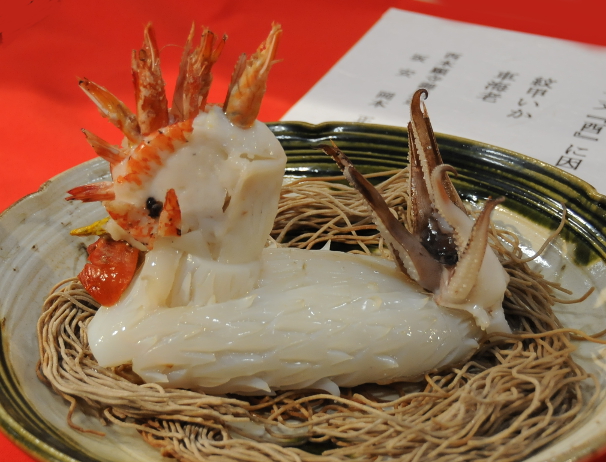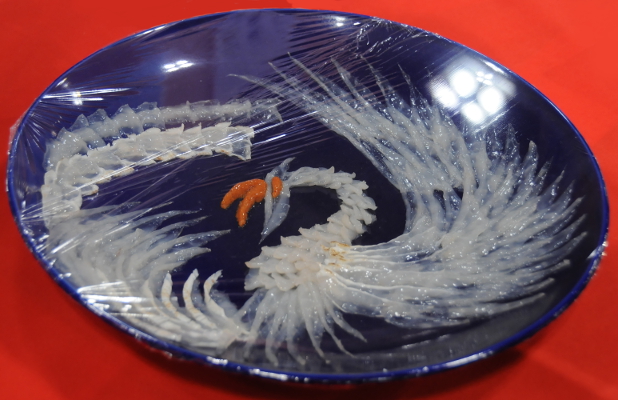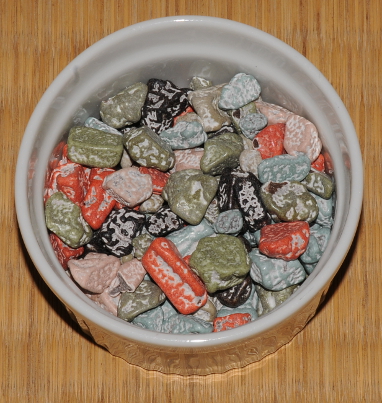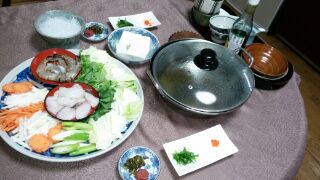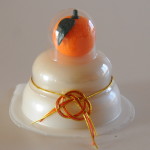As mentioned a week or two ago, at the end of November I went to a sake tasting. The person who conducted it was an American, and to be honest, I was slightly disappointed in the beginning. However, he turned out to really know his stuff and he was good at explaining things, so I was very happy in the end.
For example, I learned why on each bottle of sake there are two percentages given: The larger percentage indicates the milling rate, that is, how much the rice used was polished. The idea is that the smaller that milling rate (50% and lower, indicating more polishing), the more smooth the alcohol should taste. I say “should” because it is not always that clear-cut, or maybe my taste buds are not that refined. The smaller percentage indicated the alcohol percentage. Anything between 15 and 20% is standard, but recently, very light sake with around 8% alcohol only are produced as well, mostly to attract female customers.
Also, I have learnt that sake consists of rice, water, mold, and yeast. That means that the usual translation of sake as “rice wine” is misleading, it would be more accurate to speak of “rice beer”. Mostly, special rice is used for brewing, different to the one that is eaten. Interestingly, there is red rice that can be used for making sake. The result is something that has a very interesting taste – like European liqueur with a hint of soy sauce. It also has a distinctive red colour, most normal sake is colourless or at most slightly yellow only.
There are many sake breweries all over Japan, but Hyogo prefecture with the capital Kobe has the most. In Kyoto city, there are a number of sake breweries in Fushimi, and people claim that the water from there is especially good. Unfortunately, there are not many sake breweries that allow visitors, but every now and then, guided tours are offered. I will definitely look for one of those!
Sake brewing season is in winter when the rice has been harvested, from October to March. Over summer, the sake rests, and is afterwards bottled. The year and month of doing this is always noted on the bottle, and sake is best consumed within a month after bottling. It does not seem to age well since even our guide said the taste becomes “different” without going into details. That probably means it is awful for all but the biggest aficionados…
The most interesting information for me was that there are no sake sommeliers – you just drink it as you like it, hot or cold, with food or without… The most popular food to go with sake are tsukemono, Japanese pickles, apparently the equivalent to wine and cheese, or, more appropriately: beer and chips.
By the way: sake as we call it in the west simply means “alcohol” in Japanese, so if you want to order it here, you’ll have to use the term nihon shu, Japanese alcohol.

